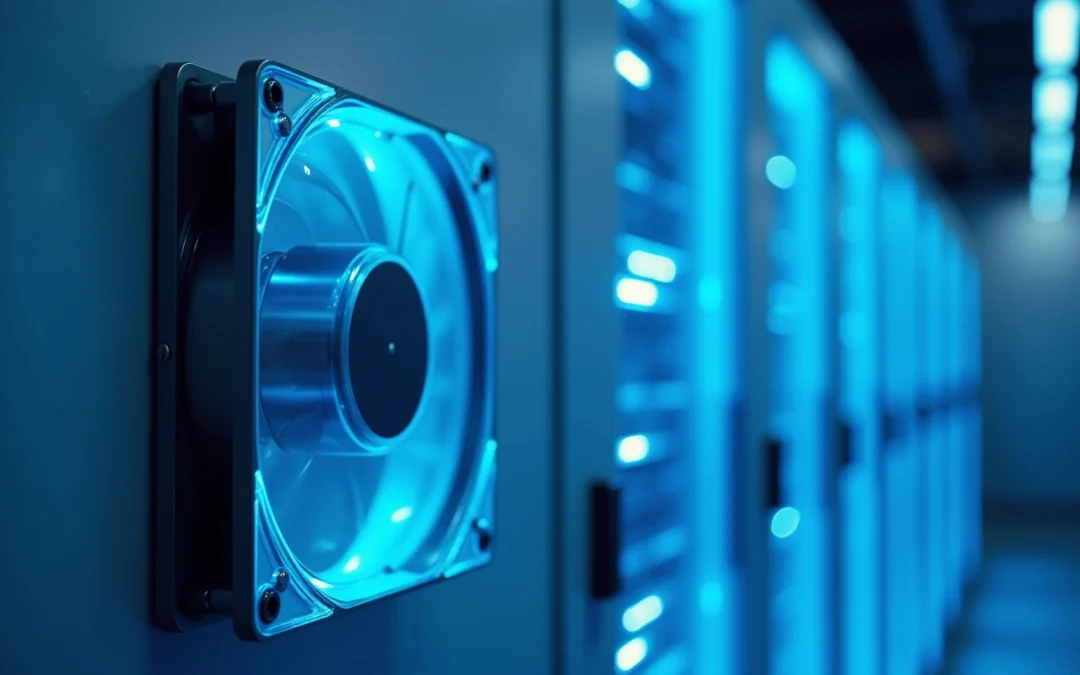Overview
Electronically Commutated (EC) fans stand out for their exceptional energy efficiency, operating at an impressive 90% efficiency and consuming 70% less power compared to traditional AC fans. This remarkable performance positions them as an optimal choice for a variety of applications. The advantages of EC fans extend beyond mere efficiency; they include:
- Reduced noise levels
- An extended lifespan
- Precise speed control
These features not only enhance overall performance but also promote sustainability, particularly in critical sectors such as HVAC and data centers. By integrating EC fans into these industries, stakeholders can achieve significant energy savings while contributing to environmental sustainability.
Introduction
Electronically Commutated (EC) fans are at the forefront of air movement technology, presenting a unique combination of efficiency and adaptability that traditional fans cannot replicate. These advanced devices operate at up to 90% efficiency and consume significantly less power, promising not only substantial energy savings but also a quieter, more durable solution for a variety of applications. As industries increasingly prioritize sustainable practices, a critical question emerges: how can EC fans further enhance operational efficiency while addressing the escalating demands for environmental responsibility?
Define EC Fans: Key Characteristics and Functionality
Electronically Commutated (EC) devices represent a significant advancement in air-moving technology, integrating brushless DC motors with sophisticated electronics. This innovative design enables efficient conversion of AC power to DC, allowing for precise control over fan speed and airflow. Notable characteristics of EC devices include exceptional energy efficiency, operating at up to 90% efficiency and consuming 70% less power than traditional AC units, resulting in substantial energy savings. Furthermore, they operate with minimal noise, making them ideal for noise-sensitive environments such as hospitals and offices.
In contrast to conventional devices that depend on mechanical brushes, EC units employ electronic commutation, which minimizes wear and extends their lifespan to between 30,000 and 70,000 hours. This durability significantly and downtime, providing a compelling return on investment. Their capacity for variable speed control renders EC units particularly effective in HVAC systems, data centers, and industrial cooling applications, where precise airflow management is crucial.
Gagner-Toomey Associates, the world’s largest producer of standard and custom air-movers, offers a comprehensive range of EC fans that are optimized for performance, available in sizes from 15mm to 910mm. Recent innovations in EC fan technology, such as the integration of variable speed controllers, facilitate real-time adjustments based on cooling demands, further enhancing power efficiency. For instance, data centers that upgrade to EC fan systems can achieve reductions of 20-30% in cooling-related power usage, significantly lowering operational expenses. The operational advantages of EC devices extend beyond resource savings; they also contribute to environmental sustainability by reducing the carbon footprint associated with cooling systems. Overall, the adoption of EC devices from Gagner-Toomey Associates presents a transformative solution to modern cooling challenges, ensuring peak performance while promoting power conservation.
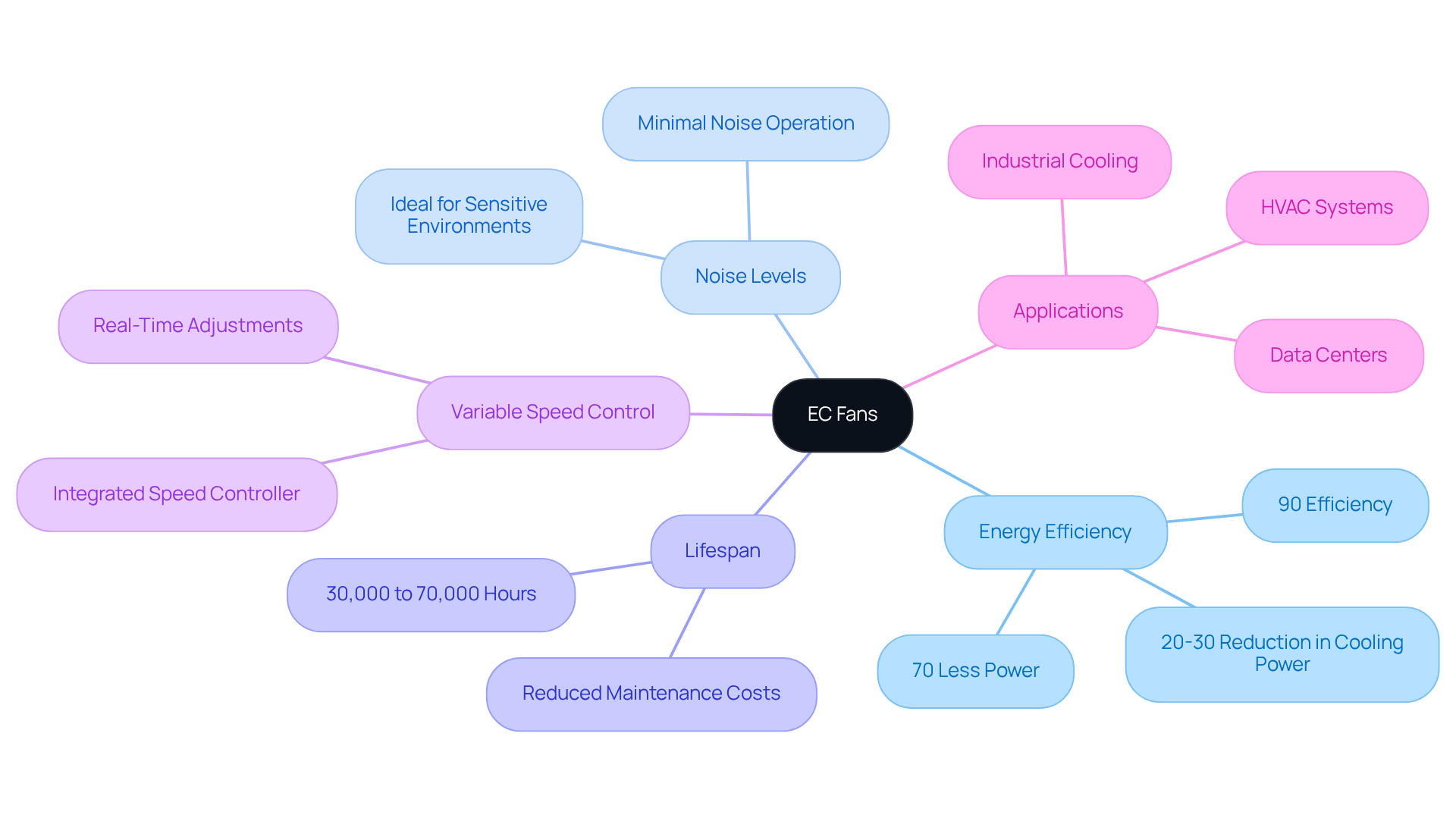
Compare EC Fans to Traditional Fans: Efficiency and Performance Benefits
When comparing EC fan units to conventional AC units, the differences in efficiency and performance are striking. EC fans can utilize up to 70% less power than their AC equivalents, enabling companies to save as much as 80% on power expenses by employing EC fans in HVAC systems. This significant reduction in operational costs is a compelling reason to consider their adoption.
Moreover, EC units offer precise speed control, thanks to their integrated variable speed controllers that accept a 0-10V reference voltage for speed adjustment. This capability allows them to modify airflow based on real-time demand, a flexibility that conventional models, which operate at fixed speeds, cannot achieve. Such adaptability not only enhances power savings but also contributes to quieter operation, making the EC fan units particularly suitable for environments where noise reduction is essential, such as libraries, law courts, supermarkets, and offices.
Furthermore, the longevity of EC units, attributed to their brushless design, results in lower maintenance expenses over time, with lifespans ranging from 30,000 to 70,000 hours compared to just 10,000 hours for AC models. This combination of power conservation, reduced noise, and extended operational lifespan positions the EC fan units as a more cost-effective and sustainable option for various applications, potentially of structures.
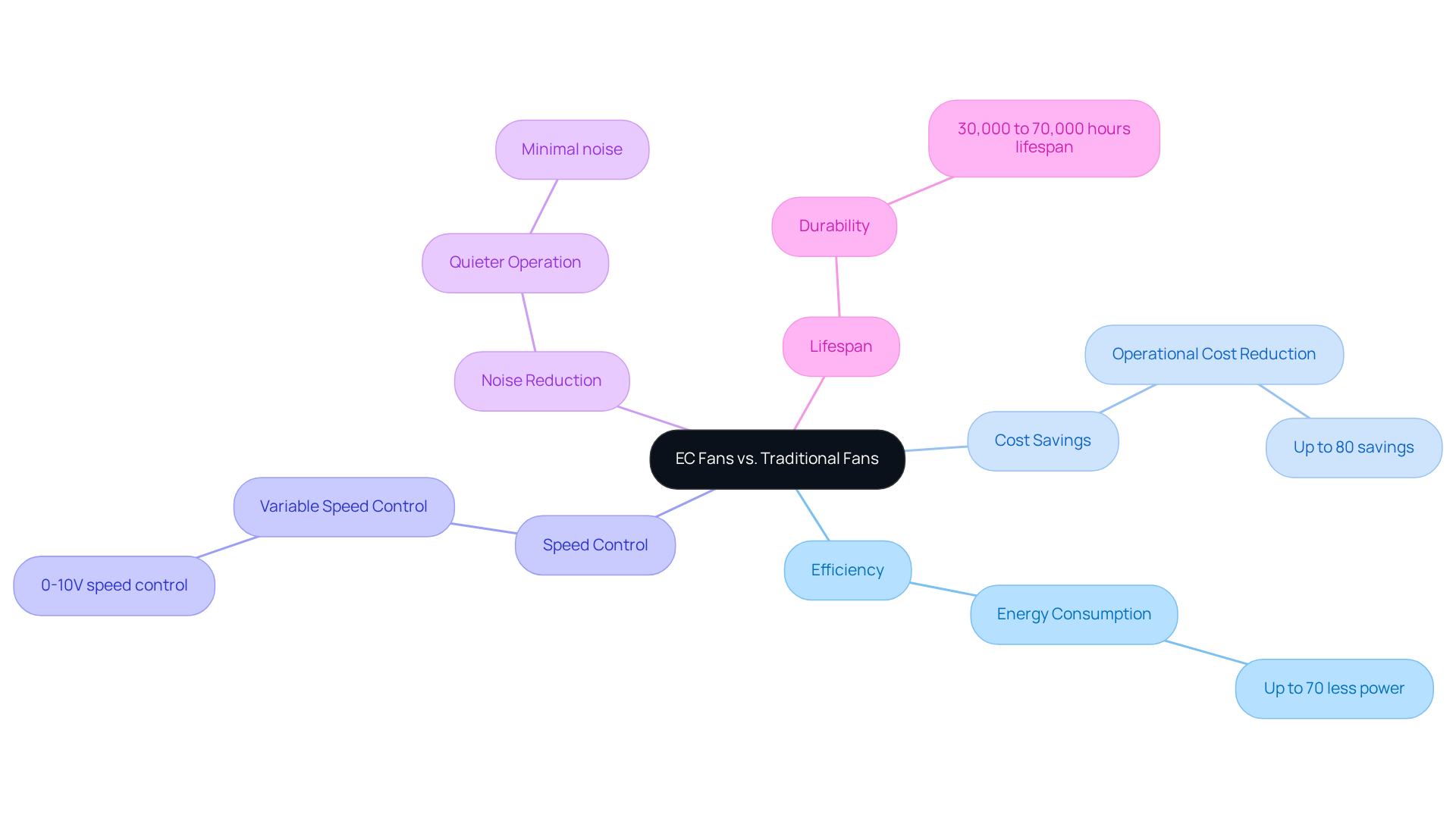
Explore Applications of EC Fans: Industries and Use Cases
EC enthusiasts are increasingly recognized for their efficiency and adaptability across diverse industries. In the HVAC sector, EC fans play a crucial role in ventilation and cooling within commercial structures, where resource conservation is paramount. For instance, data centers employ EC fans to maintain optimal temperatures for sensitive equipment, achieving reductions of up to 30% in cooling-related power consumption. Notably, 55% of the total power used in a data center is dedicated to cooling IT equipment, underscoring the significance of these savings.
Moreover, these devices are being integrated into refrigeration systems, automotive applications, and even aerospace technology, where reliable cooling is essential. Their ability to operate effectively in various environments positions the EC fan units as a preferred choice for engineers aiming to enhance system performance while substantially reducing power costs.
With EC fan models operating at up to 90% efficiency and consuming 70% less power compared to traditional AC models, and considering that can be two or more times greater than those for EC fans, their adoption not only boosts operational effectiveness but also supports sustainability initiatives across multiple sectors.
Additionally, buildings equipped with efficient HVAC systems may see an increase in sale prices, further highlighting the importance of EC fan units in commercial applications.
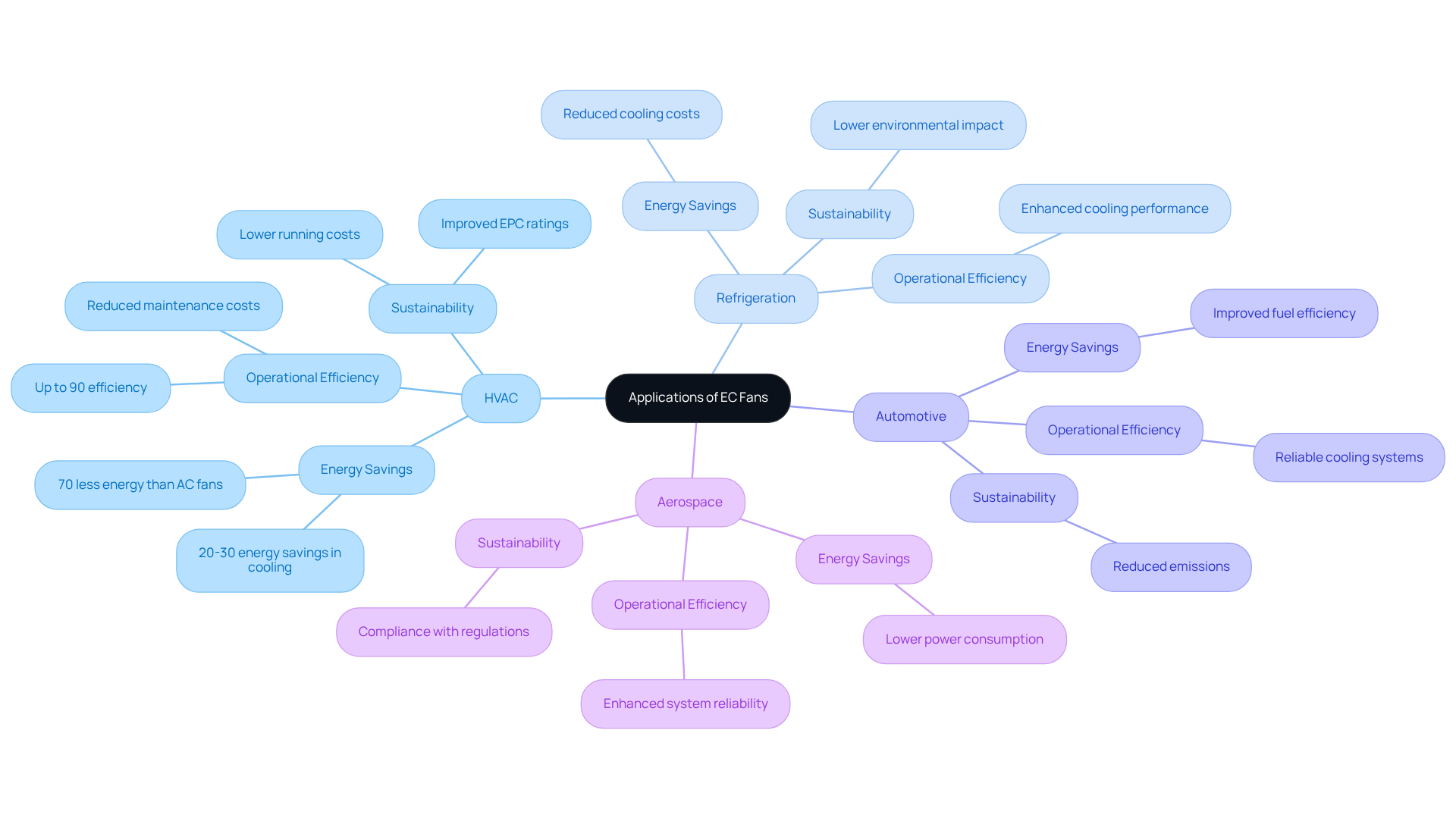
Future Trends in EC Fan Technology: Innovations and Sustainability
The future of ec fan technology is expected to see significant advancements, particularly in efficiency and intelligent integration. As various sectors increasingly prioritize sustainability, EC fan devices are becoming indispensable to resource conservation initiatives. Innovations such as IoT integration and predictive maintenance are anticipated to enhance the functionality of ec fans, facilitating real-time monitoring and performance optimization.
The EC fan market size is estimated at USD 4842 million as of 2022, with a projected Compound Annual Growth Rate (CAGR) of approximately 4.2%. This growth in demand for these technologies is likely as tighten. Such trends not only foster operational cost savings but also contribute to broader environmental objectives.
As Paul McCartney aptly stated, “There must be a better way to make the things we want, a way that doesn’t spoil the sky, or the rain or the land,” emphasizing the critical importance of sustainable practices in technology.
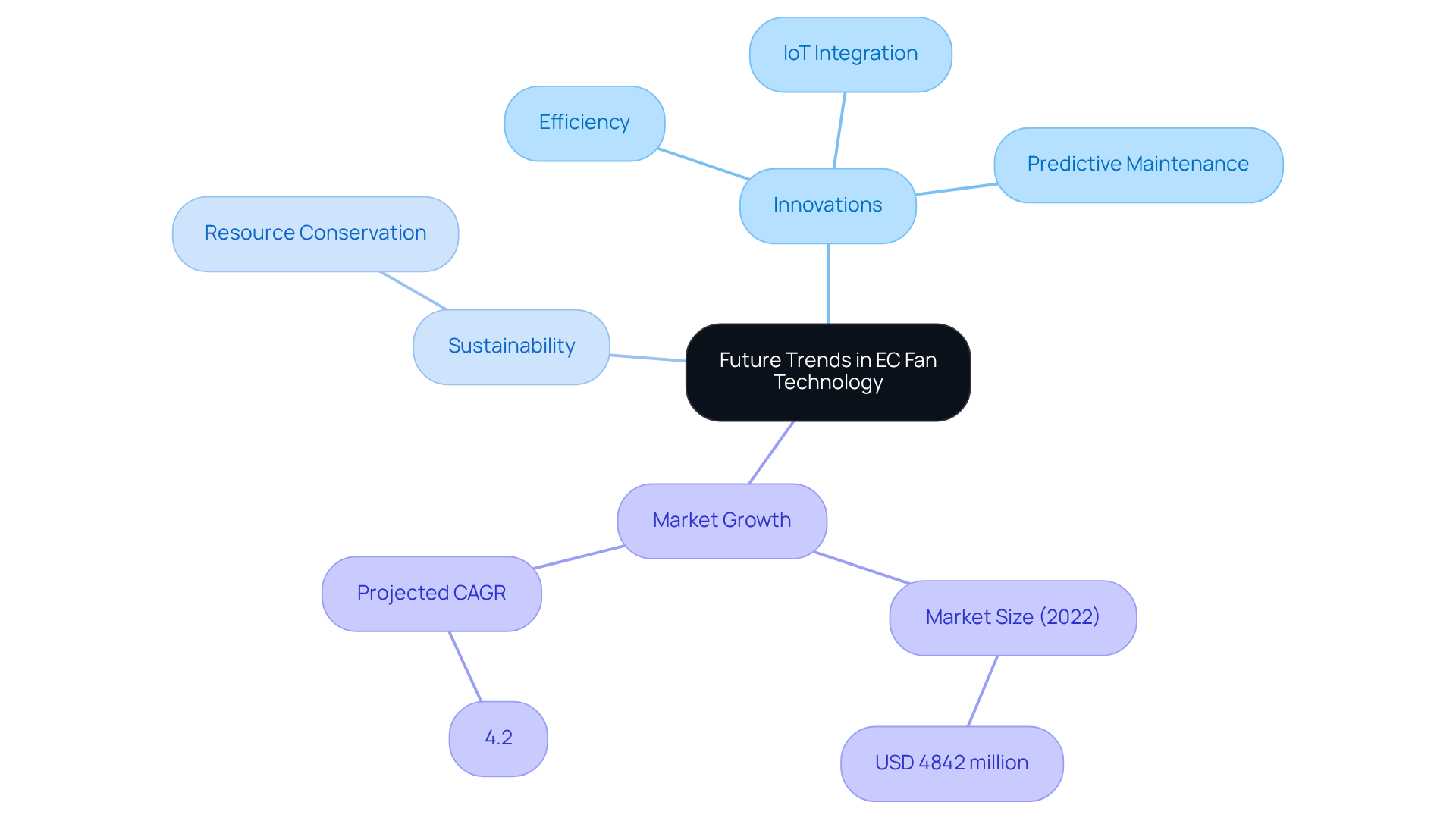
Conclusion
Electronically Commutated (EC) fans signify a transformative advancement in air movement technology, seamlessly blending energy efficiency with sophisticated functionality. Their design achieves exceptional efficiency—operating at up to 90% and consuming 70% less power than traditional AC fans—while simultaneously enhancing durability and minimizing noise. Such attributes position EC fans as the optimal choice for diverse applications, especially in settings where precise airflow management and sustainability are paramount.
The article underscores several pivotal advantages of EC fans, notably their capability to operate with variable speed control, facilitating real-time adjustments based on demand. This adaptability results in substantial energy savings and diminished operational costs, particularly in sectors such as HVAC and data centers. Furthermore, the longevity of EC fans, with lifespans extending from 30,000 to 70,000 hours, accentuates their cost-effectiveness and lower maintenance requirements compared to conventional models.
As industries increasingly prioritize sustainability and operational efficiency, the significance of EC fans is poised to expand. Innovations like IoT integration and predictive maintenance are on the horizon, promising to further enhance their functionality. Adopting EC fan technology not only fosters cost savings but also aligns with broader environmental objectives, rendering it a crucial consideration for businesses aiming to future-proof their operations.
Frequently Asked Questions
What are EC fans?
EC fans, or Electronically Commutated fans, are advanced air-moving devices that combine brushless DC motors with sophisticated electronics to efficiently convert AC power to DC, allowing for precise control over fan speed and airflow.
What are the key characteristics of EC fans?
Key characteristics of EC fans include exceptional energy efficiency (operating at up to 90% efficiency and consuming 70% less power than traditional AC units), minimal noise operation, and a lifespan of 30,000 to 70,000 hours due to the absence of mechanical brushes.
How do EC fans compare to traditional AC fans in terms of efficiency and maintenance?
EC fans are significantly more efficient, consuming 70% less power than traditional AC fans. They also require less maintenance due to their electronic commutation, which minimizes wear and extends their lifespan, resulting in reduced downtime and maintenance costs.
In what applications are EC fans particularly effective?
EC fans are particularly effective in HVAC systems, data centers, and industrial cooling applications where precise airflow management is essential.
What recent innovations have been made in EC fan technology?
Recent innovations in EC fan technology include the integration of variable speed controllers that allow for real-time adjustments based on cooling demands, further enhancing power efficiency.
How can data centers benefit from upgrading to EC fan systems?
Data centers that upgrade to EC fan systems can achieve reductions of 20-30% in cooling-related power usage, significantly lowering their operational expenses.
What environmental benefits do EC fans provide?
EC fans contribute to environmental sustainability by reducing the carbon footprint associated with cooling systems, making them a greener choice for air movement.
Who is a leading producer of EC fans?
Gagner-Toomey Associates is the world’s largest producer of standard and custom air-movers, offering a comprehensive range of EC fans optimized for performance.

